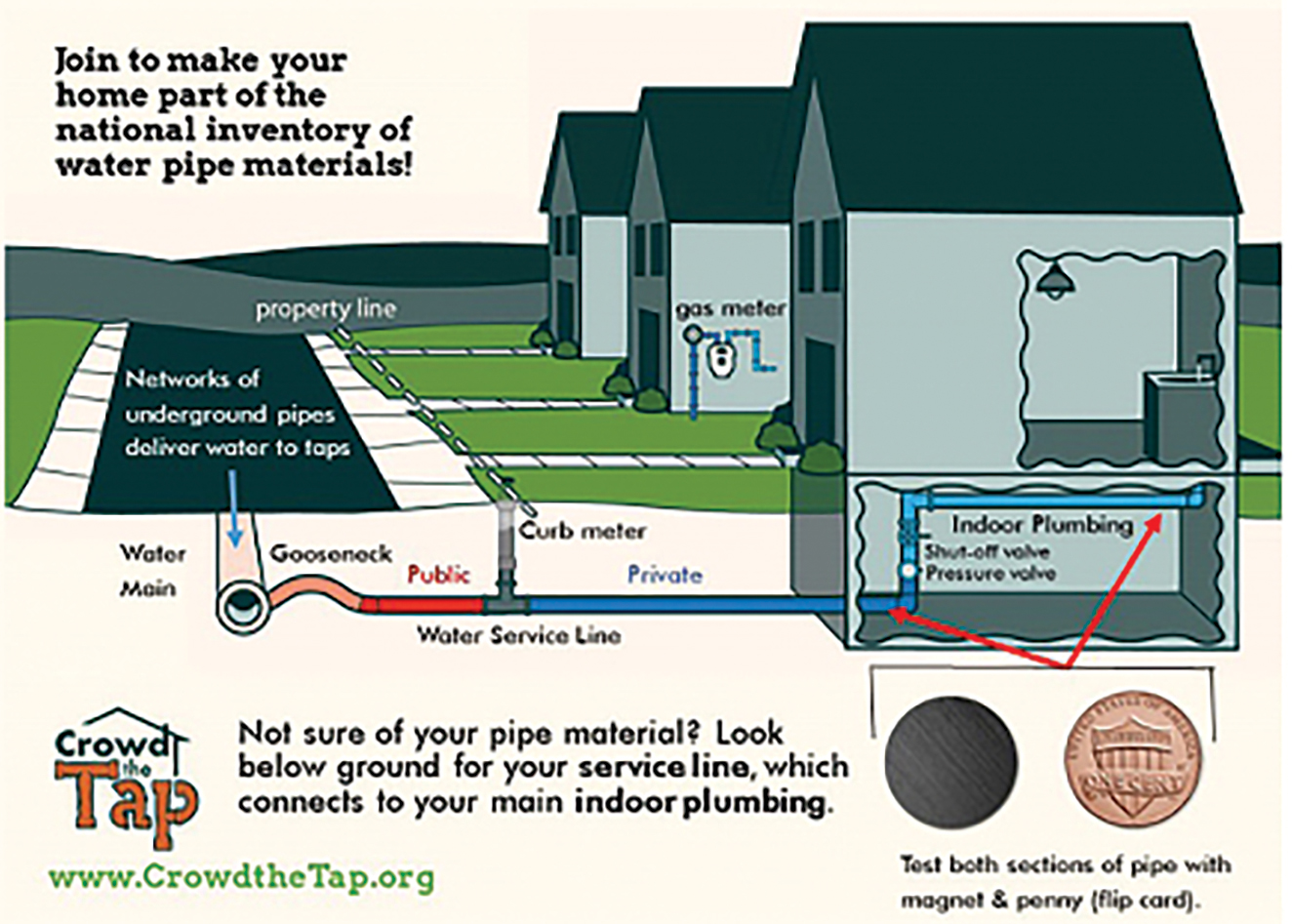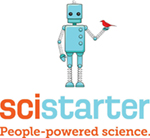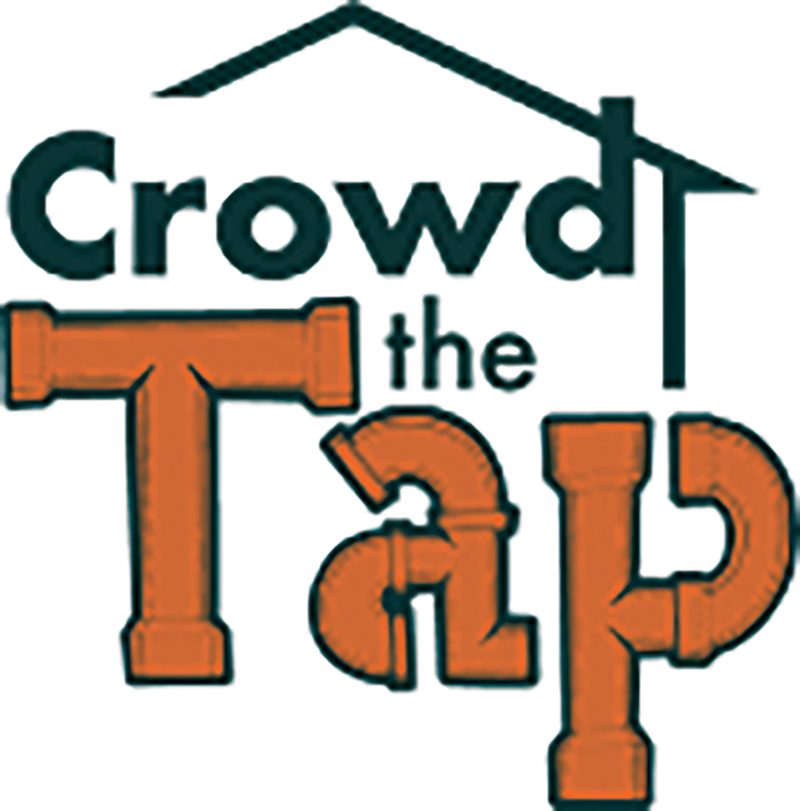Citizen Science
Tapping Into the Power of the Crowd to Ensure Safe Drinking Water for All
Roughly 1.2 million miles of pipes transport water throughout the United States, yet little is known about the materials that make up the country’s water line infrastructure. In 1986, the installation of lead pipes was banned in the United States, as lead pipes are the main way that lead enters drinking water. Many lead pipes have since been replaced, however, an unknown quantity of the country’s water line infrastructure likely still contains lead pipes, which poses serious human health hazards.
An innovative, first of its kind citizen science project, Crowd the Tap aims to harness the power of the crowd to document the types of water pipes across the United States, pipes that bring water into our homes and schools every day. Crowd the Tap is funded by the Environmental Protection Agency (EPA) and works towards creating a comprehensive national inventory of tap water pipes. The project engages participants in the inspection and identification of plumbing materials along water main and water service lines, with the goal of ultimately ensuring safe drinking water for all.
- Project goal: To create a national inventory of tap water pipes as a first step towards ensuring safe drinking water for all.
- Your task: Test indoor water pipes to determine the material of the pipes (steel, copper, plastic, or lead), by using a penny and a magnet; and reach out to your local water utility provider to determine public water pipe type.
- Science discipline: Environmental Science
To get started, visit Crowd the Tap on SciStarter’s website (See “Project Link on SciStarter”). From there you will set up an account to submit and upload your data. Once your account is set up, and you’ve referred to the project’s visual resource to guide you as you locate residential pipe locations (See “Project Home” and “Project Link on SciStarter”), you are ready to collect data. Gather a penny and a magnet; they will be used to test your indoor plumbing pipes. Crowd the Tap invites and encourages educators to reach out to the project team for additional assistance and partnering in bringing Crowd the Tap to your students and community. (See “Contact for more information”)
Materials you will need
- Penny
- Magnet
- Data sheet (See “Project Home” and “Project Link on SciStarter”)
Start with the magnet, and put the magnet against the pipe. If the magnet sticks to the pipe, the pipe is made of steel and can be identified as a steel pipe. If the magnet doesn’t stick, then you will try the scratch test with the penny.
Scratch the pipe with the penny. If there is no shine or mark, then you have a plastic pipe, and can record plastic pipe in your data. If your penny scratch test results in the same relative color as the penny, then you have a copper pipe and will record copper pipe in your data.
Finally, if your penny scratch test results in a scratch with sliver or gray streak, then the pipe is lead, and lead pipe will be recorded in the data. Students will also have the opportunity to report data on the taste, color, and smell of the tap water.
Water utility companies supply water to most residences (a small number of residences in the United States utilize private wells as a water source) and the water utility company maintains the beginning of the water pipe line; the remainder of the pipe line from the water main to your faucet is the property of the residence’s owner. So to understand water pipes, it is important to gather data in the home, and to also gather data by contacting the water utility company to see the full picture (See Figure 1). Crowd the Tap provides a helpful script to use when you reach out to the utility company to gather data needed to complete the bottom half of the data sheet. Your water provider will be able to provide data and information on the pipe type under their purview.

Public and private water service lines.
Crowd the Tap invites students to engage in meaningful science that is working to ensure that tap water is safe and lead-free for all.
Crowd the Tap has created lesson plans, a helpful introductory video, and educator resources that align with the citizen science project (See “Helpful Project Links”). The project engages learners in real-world authentic science, cultivates awareness, and inspires action related to local water quality issues. On a global scale, students may also be interested in exploring the “Water Action Decade” (2018-2028) resources as well as the United Nation’s Sustainable Development Goal 6 (SDG 6), which focuses on taking action through the year 2030 on targets related to water access quality worldwide (See “Additional Resources”). From local engagement to an expanding global view of water issues, Crowd the Tap provides today’s learners with a meaningful science experience that has the potential to springboard into further curricular and co-curricular connections and community collaborations.
Crowd the Tap at a glance
When: Anytime.
How: Visit “Project Link on SciStarter” to set up your account and begin collecting and submitting data.
Where: United States.
Time needed: Variable.
Special equipment needed: Magnet.
Cost: Free. Educators are encouraged to reach out to the Crowd the Tap Team for additional assistance and partnering in bringing Crowd the Tap to your students and community.
Contact for more information: crowdthetap@ncsu.edu
Safety: As with any science lab, classroom, or field activity, always ensure that you are following recommended safety practices; for more information on safety in the science classroom visit www.nsta.org/safety.
Helpful Project Links
Project home: https://crowdthetap.org/
Chemistry Connections Student Activity: https://orrery-media.s3-us-west-2.amazonaws.com/curated/CTT+Chemistry+Connections+Student+Activity.pdf
Crowd the Tap Lesson Plan: https://orrery-media.s3-us-west-2.amazonaws.com/curated/CTT+Teacher+lesson+plan.pdf
Crowd the Tap Student Guide: https://orrery-media.s3-us-west-2.amazonaws.com/curated/CTT+Student+guide.pdf
Tips and Recommendations: https://crowdthetap.org/tips/
Video Introduction: https://www.youtube.com/watch?v=wOt2oogj0AM
Project link on SciStarter: https://scistarter.org/form/crowd-the-tap
Additional Resources
PA Educator Website: https://www.epa.gov/students/lesson-plans-teacher-guides-and-online-environmental-resources-educators
U.N. Global Goals: Sustainable Development Goal (SDG) 6 Water: https://www.un.org/sustainabledevelopment/water-and-sanitation/
U.N. Water: http://www.unwater.org/
Water Action Decade: http://www.wateractiondecade.org/

This column is the result of a partnership between SciStarter and the National Science Teaching Association. For more information about SciStarter and other citizen science projects, please visit www.scistarter.org.



